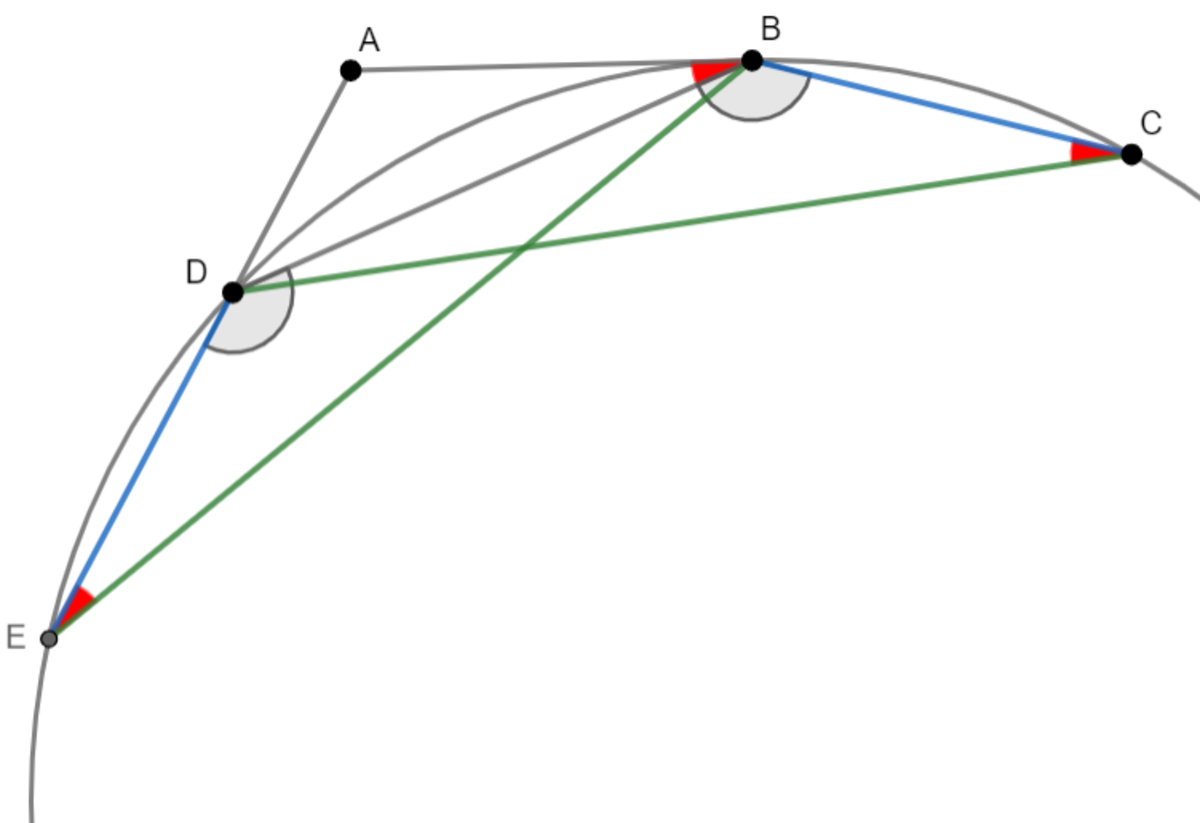Grumpy Quadrilateral
In a quadrilateral A B C D , ∠ A B D = ∠ B C D and ∠ A D B = ∠ A B D + ∠ B D C . If A B = 8 and A D = 5 . What is the length of B C ?
This section requires Javascript.
You are seeing this because something didn't load right. We suggest you, (a) try
refreshing the page, (b) enabling javascript if it is disabled on your browser and,
finally, (c)
loading the
non-javascript version of this page
. We're sorry about the hassle.
2 solutions
How can we students know what to do next? I basically mean how did you think about splitting ∠ A D B by D E ?
Log in to reply
Basically one will learn through experience. Problems are set by human. Through experience you will learn to know why the creator of the problem set the problem that way.
Log in to reply
Thanks! By the way, I released a new Problem. Check it out!
Let ∠ A B D = α and ∠ B D C = β , we are given that ∠ B C D = α and ∠ A D B = α + β .
By the alternate segment theorem , A B is tangent to the circumcircle of △ B D C at point B .
Construction:
Draw the circumcircle of
△
B
D
C
and extend
A
D
to
E
such the point lies on the circle.

Simple angle chasing leads to ∠ B D E = ∠ D B C = 1 8 0 − α − β Since quadrilateral B D E C is cyclic , ∠ D E B = ∠ B C D = α From the above results, it is easy to see that △ B D E ≅ △ D B C ⟹ D E = B C Applying the tanget-secant theorem , A D ⋅ A E = A B 2 ⟹ A D ⋅ ( A D + D E ) = A B 2 ⟹ D E = B C = A D A B 2 − A D 2 Substituting the given values for A D and A B , B C = 5 8 2 − 5 2 = 5 3 9
Let ∠ A B D = ∠ B C D = α and ∠ B D C = β . Then ∠ A D B = ∠ A B D + ∠ B D C = α + β . Split ∠ A D B by D E such that ∠ A D E = α and ∠ B D E = β . Then ∠ D E A = ∠ D B E + ∠ B D E = α + β .
We note that △ A D E and △ A B D are similar. Then A D A E = A B A D = 8 5 ⟹ A E = 8 5 ⋅ A D = 8 2 5 . Also △ B C D and △ B D E are similar and
B D B C = D E B E ⟹ B C = B E ⋅ D E B D = B E ⋅ A D A B = ( 8 − 8 2 5 ) 5 8 = 5 3 9